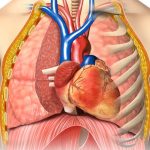While all of the body’s organs are obviously vital for survival, few need protecting more than the brain, the organ responsible for every activity in the body. The brain is particularly difficult to treat and protect from damage, as its cells typically do not regenerate, so when damage occurs, it is usually for a lifetime.
While all of the body’s organs are obviously vital for survival, few need protecting more than the brain, the organ responsible for every activity in the body. The brain is particularly difficult to treat and protect from damage, as its cells typically do not regenerate, so when damage occurs, it is usually for a lifetime.
Alzheimer’s disease is one such illness that permanently affects the brain, and in turn, affects the entire body. A form of dementia, Alzheimer’s disease is a progressive, neurodegenerative disease that occurs when nerve cells in the brain die, which leads to symptoms like confusion, and impaired memory, thinking and behavior.
This disease begins by damaging brain cells, and eventually destroys them entirely, getting worse as the disease progresses.
As Alzheimer’s disease continually degrades the brain, the nerve cells are also degraded, and communication from the brain to the body begins to become difficult, which can affect bodily functions.
Recently, researchers have identified several abnormalities that contribute to an individual contracting Alzheimer’s disease.
Brain cells losing connection: The brain cells responsible for memory, communication, and learning begin to lose contact, making signal transmission impossible. This affects functions like memory, as brain cells cannot transmit memories from short term to long term for example.
Plaques:
Microscopic masses of a protein fragment called beta-amyloid are found in the brains of Alzheimer’s patients. These peptides are from a larger protein found in the fatty membrane surrounding nerve cells. Beta-amyloid is chemically “sticky” and gradually builds up into plaques. Beta amyloid peptides are toxic to nerve cells.
Tangles:
Tangles are twisted microscopic strands of the protein tau that form in the nerve cells of the brain and destroy a vital cell transport sys
tem made of proteins.
Inflammation: The body’s natural immune system triggers the inflammatory effect throughout the body. Chronic inflammation causes a lot of trouble throughout the body and is thought to be responsible for most deadly diseases in one way or another.
Like other troubling diseases, studies are ongoing to develop more effective treatments for disorders of the brain like Alzheimer’s.
One such treatment that researchers have found to show promise is a compound called huperzine A, a substance made from Chinese club moss. Huperzine A is highly purified from the Chinese club moss, and has shown promise in treating Alzheimer’s disease, as well as to improve memory and learning enhancement, energy, and alertness. Huperzine A is so effective at preventing nerve damage that it is even used to protect against agents that can damage the nerves, such as nerve gases.
Huperzine A (Hup A) is thought to be beneficial for problems with memory, loss of mental abilities (dementia), and the muscular disorder myasthenia gravis because it causes an increase in the levels of acetylcholine. Acetylcholine is one of the chemicals that our nerves use to communicate in the brain, muscles, and other areas.
A study published in the journal Evidence-based Complementary and Alternative Medicine performed a meta-analysis on the effectiveness of this powerful compound for the treatment of Alzheimer’s disease (AD) and vascular dementia (VD). The analysis involved 8 AD trials with 733 participants, and two VD trials with 92 participants, evaluating the effectiveness of huperzine A via the minimental state examination (MMSE) and activities of daily living scale (ADL).
After scouring many other studies, researchers concluded that “Hup A could significantly improve the MMSE and ADL score of AD and VD patients, and longer durations would result in better efficacy for the patients with AD.”
In addition to improvements in the minimental state examination and activities of daily living scales, researchers also noticed that there was also a significant improvement of cognitive function, measured by memory quotient (MQ) in patients with Alzheimer’s disease, and little to no negative side-effects were noticed. The side-effects were noted to be only of mild-to-moderate severity, leading researchers to believe that huperzine A is both effective and safe.
The explanation behind the effectiveness of huperzine A is its ability to inhibit an enzyme that degrades a neurotransmitter called acetylcholine.
Acetylcholine is known as the “learning neurotransmitter”, as it is involved in many of the brain’s functions, and its degradation results in brain disorders. It is also involved in muscle contraction. Huperzine A works to help inhibit the enzyme acetylcholinesterase from breaking down the acetylcholine molecules in the brain, leading to reduced damage from the enzyme in the brain.
Another meta-study noticed similarities in the effectiveness of huperzine A to protect the brain from Alzheimer’s disease.
This study, published in PLoS ONE, conducted a review of randomized clinical trials of huperzine A for Alzheimer’s disease, and found 20 studies with 1823 total participants. Researchers conducting this study found that when compared to placebo, huperzine A showed “a significant beneficial effect on the improvement of cognitive function as measured by Mini-Mental State Examination (MMSE) at 8 weeks, 12 weeks and 16 weeks, and by Hastgawa Dementia Scale (HDS) and Wechsler Memory Scale (WMS) at 8 weeks and 12 weeks.”
Other studies have also noted that the longer huperzine A is administered, the greater the effect on the participant, suggesting the safety and efficacy of long term usage.
Like all studies, these are simply guidelines for efficacy, but hundreds of independent studies do indeed point to the efficacy of huperzine A for Alzheimer’s disease and dementia. This new weapon in the fight against terrible brain diseases is just that, one approach. A major benefit of huperzine A is its safety.
Huperzine A has been found to be very safe for short term usage, as well as safe for use for up to three months, making it a good complement to other effective treatments for Alzheimer’s disease. And this seems to be the best approach to treatment, a complementary regimen of powerful compounds that together may represent an effective and safe long term treatment plan.











